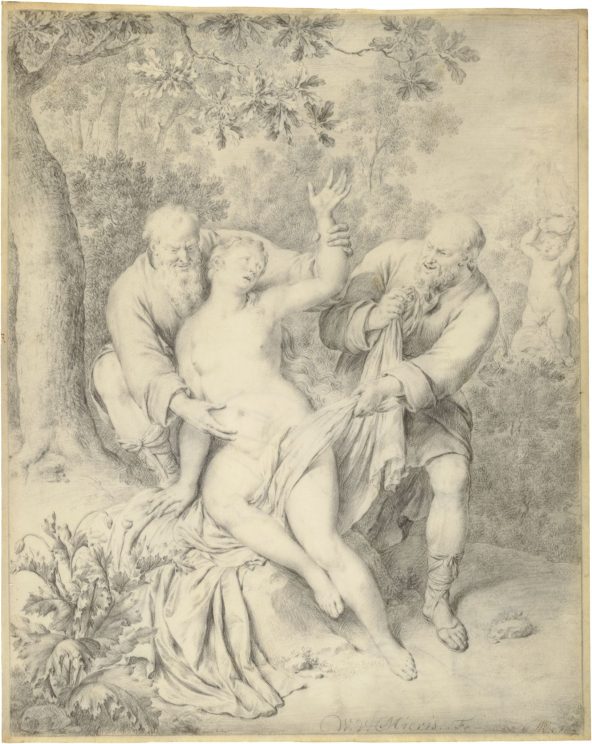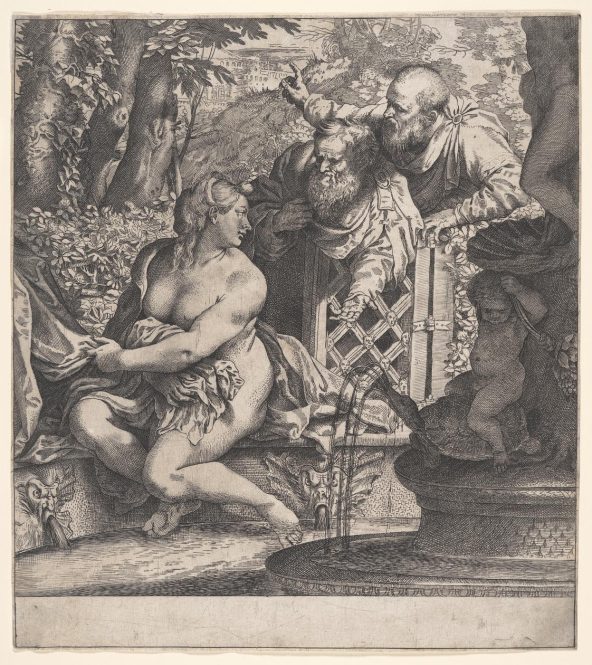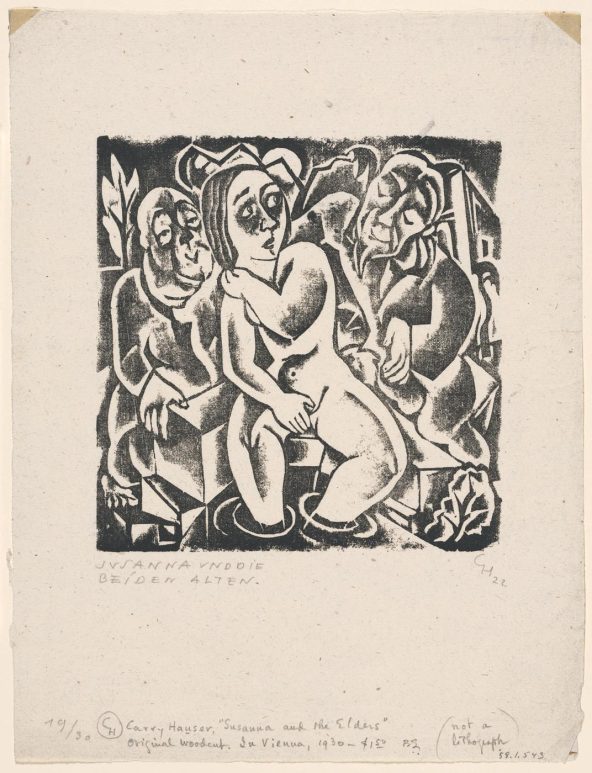Article: Susanna and the Elders
Focus on the Peck Feature
The Old Testament apocryphal story of Susanna and the Elders has captivated artists for centuries. In it, a virtuous woman prevails and good triumphs over evil. This installation from the Peck Collection features Willem van Mieris’ beautifully executed Susanna and the Elders drawing alongside two contrasting depictions of the theme, also from the permanent collection. Ranging from the sixteenth to the twentieth century, the Italian, Dutch, and Austrian versions differ in media, technique, and compositional framework, as well as in the level of psychological and physical turmoil depicted.
The apocryphal story of Susanna and the Elders has captivated artists for centuries. A riveting tale about an honorable woman’s innocence, it offered opportunities to depict nudity and issues of morality under dramatic and emotional circumstances. In the biblical book of Daniel, two respected judges lust after Susanna, the wife of a prosperous Babylonian man. While bathing, the elders proposition her, but she refuses. In anger, they accuse her of adultery and Susanna is sentenced to death. Through divine intervention, the truth of Susanna’s incorruptibility emerges, and she lives on to become a symbol of female virtue and the triumph of good over evil.

Willem van Mieris, Dutch, 1662 – 1747, Susanna and the Elders, c. 1700, black chalk on vellum. The Peck Collection, 2017.1.54
See van Mieris’ Susanna and the Elders, c. 1700, in more detail here.
Featuring one drawing from the Peck Collection at the Ackland (above) and an engraving and woodcut also from the permanent collection, this installation demonstrates three distinct interpretations of the theme. Ranging from the sixteenth to twentieth century, they differ in technique, compositional framework, and level of psychological and physical turmoil.

Annibale Carracci, Italian, 1560 – 1609, Susanna and the Elders, c. 1590-95, engraving and etching. Ackland Fund, 82.49.1
See Carracci’s Susanna and the Elders, c. 1590-95, in more detail here.
Italian artist Annibale Carracci’s engraving is refined in both appearance and sentiment (above). Standing behind a gate, the elders converse with Susanna, who appears somewhat undisturbed by their threats. In contrast, Austrian artist Carry Hauser’s 1922 woodcut is direct and expressive (below). The crowded figures, distorted space, and simplified forms emphasize Susanna’s entrapment as the elders converge upon her. The conflict is heightened in Dutch artist Willem van Mieris’ drawing, created around 1700 (top). By introducing physical contact with Susanna, he embellishes the narrative for dramatic effect. Overpowered and nearly fully exposed, her distress is prominently on display, made all the more palpable by the immediacy of the drawing medium.
See Hauser’s Susanna and the Elders (Susanna Und Die Beiden Alten), 1922, in more detail here.

Carry Hauser, Austrian, 1895 – 1985, Susanna and the Elders (Susanna Und Die Beiden Alten), 1922, woodcut. Burton Emmett Collection, 58.1.543
